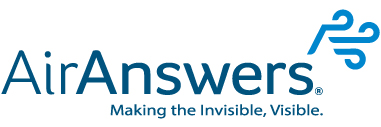AirAnswers: The Answer To Mitigating COVID-19 Risk
More frequently in the news, we are hearing about the increased risk for severe COVID-19 infection in at-risk populations. It is more crucial to have proper air health and safety protocols in place around these populations. But what really are at-risk populations? Most people tend to think of older individuals with pre-existing conditions, but there are many more factors.
There are many ways of looking at and defining an at-risk population, some risk factors that constitute these populations are:
- medical (those with pre-existing conditions, especially compromised lung function)
- where you live (assisted living, rehab, multi-family residence, rural areas with limited healthcare)
- socioeconomic/ access to resources (those who lost jobs, underprivileged groups)
Providing ongoing monitoring of air quality and validating air sanitization protocols are even more essential in areas where these risk factors are common.
For example, picture a dialysis or chemotherapy center. Patients have to spend multiple hours in the facility, and multiple patients are clustered in one room. These patients often have multiple medical conditions, and they cannot forgo their treatment. A COVID-19 outbreak in such a facility could have disastrous consequences.
Dr. Robert Geng, an allergist/immunologist at Rady Children's Hospital-San Diego and an assistant clinical professor at UC San Diego School of Medicine said, "Patients who either reside or need to frequently access healthcare facilities are at an increased risk for COVID on several levels. First, many of those patients have multiple underlying medical comorbidities that put them at risk for infection or developing more severe complications from an infection. Second, healthcare facilities are often places of transmission for many infections due to the congregation of illness in a confined indoor setting for prolonged periods of time. Many of those healthcare facilities and infusion centers have taken extra precautions and implemented robust air filtration systems to help reduce the potential for COVID exposure. Therefore, it would be helpful to provide additional information with an air-detection system to increase awareness of the effectiveness of those measures to guide further strategy to mitigate exposure for these high-risk patients.”
In addition to those with immunodeficiencies, those residing in long-term care facilities, and those with compromised lung function, there are other groups at increased risk of contracting COVID-19. This group includes people who attend risky events such as large family gatherings, parties, sports events or groups opposing precautions like wearing masks and being vaccinated. The last is an emerging at-risk population. These events create exposure and community-based infection, and continuous monitoring of the air may not be enough to stop the spread. AirAnswers® is not the answer to risky behavior, it is not a replacement for protective measures. But it can help verify airborne health and safety protocols for those most in need.










